Philip Edward Buckingham
Second Lieutenant Philip Edward Buckingham, 7 Squadron, Royal Air Force
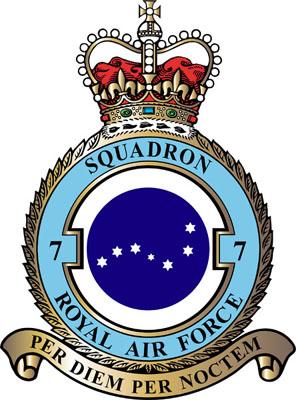
The badge of 7 Squadron RAF. (wikipedia) |
Philip, their eldest child, was educated at Newbury Grammar School and Churcher’s College in Petersfield, Hampshire. When war was declared in August 1914 he was not yet eighteen, but he attempted to get a commission in the Army. He was rejected on medical grounds; however, following an operation, he was successful when he re-applied in January 1915. He had had some previous ‘military’ experience, serving in the Officer Training Corps at Churcher’s from January 1910 until he left the College in December 1913. Such experience may appear trivial today, but, together with personal references from his old headmaster and a Newbury solicitor (George Gardner Leader) it was enough to convince the Army that Philip was officer material. He did not start training immediately, it was not until the end of May that he heard from the War Office, instructing him to turn up at a training school in Crowborough, Sussex, on 2 June 1915. He was informed that he could arrive in uniform, or civvies if his uniform was not yet ready, and that he was responsible for his own transport costs to Crowborough. He was to be commissioned into the 10th (Service) Battalion of the Bedfordshire Regiment, but, following his period at the training school he would initially be attached to a Territorial battalion for further instruction; thus ensuring that he arrived at his battalion ready to assume the duties of a junior officer. His proud parents notified the local paper of his commission:
Newbury Weekly News, 10 Jun 1915 – Local War Notes
Mr Philip Edward Buckingham, son of Mr and Mrs Buckingham, the Limes, Newbury, has been gazetted Second Lieutenant to the 10th Bedfordshire Regiment, and is in training at Crowborough.
When he went to France in June 1916 he was attached to the Royal West Kent Regiment, probably their 6th Battalion, his records do not make this clear but it is known that he served with the 37th Trench Mortar Battery, which was the light trench mortar battery for the 37th Brigade, which included the 6th Battalion, Royal West Kents (all infantry battalions in a brigade contributed officers and men to brigade units such as trench mortar batteries and machine gun companies).
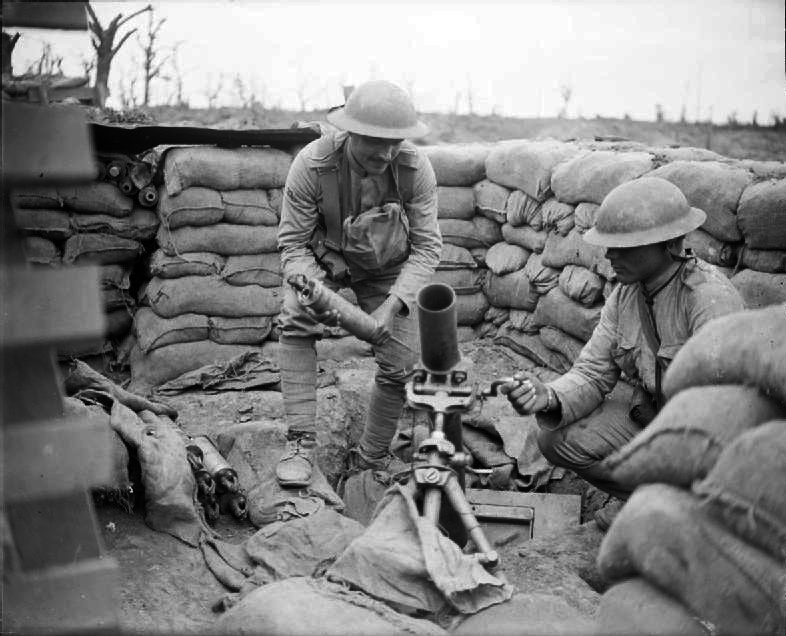
The Stokes Mortar - the standard light mortar in use by the British from 1916. (wiki-commons) |
During one such action Philip showed coolness under extreme pressure and was rewarded with the award of a Military Cross, a gallantry award for junior officers. The award was noted in the pages of the local paper:
Newbury Weekly News, 15 Nov 1917 – Local War Notes
Lieut P E Buckingham, of Newbury, was awarded the Military Cross on November 1st. He is home at present for his 21st birthday. He belongs to the 37th Trench Mortar Battary, was educated at the Newbury Grammar School and Churchers College, Petersfield.
The award of his MC was officially announced in the London Gazette on 26 November 1917, but it was some time before any details were announced:
London Gazette, 6th April 1918
T./2nd Lt. Philip Edward Buckingham, attd. R.W. Kent R.
For conspicuous gallantry and devotion to duty. By his gallant example he kept up the morale of his men, and showed great energy and resource in keeping his guns in action in spite of a heavy barrage and many difficulties connected with the guns themselves.
Neither announcement gives the date of the action in which his gallantry was rewarded. Further research may uncover more information.
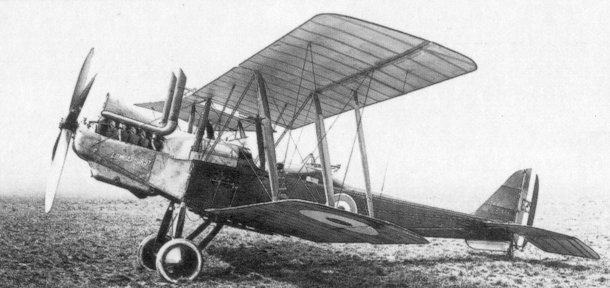
An RE8 aircraft of the type flown by Raynes and Buckingham (Australian War Memorial). |
The workhorse of the RAF for this reconnaissance role was the Royal Aircraft Factory’s RE8 [http://en.wikipedia.org/wiki/Royal_Aircraft_Factory_R.E.8 - pic]. With a crew of two (pilot and observer) it could be also be used as a bomber. The observer also doubled as a gunner able to use twin Lewis guns to strafe enemy troops below or defend the RE8 from attacks by enemy aircraft. However, RE8s were very vulnerable to attack by German fighters, life expectancy in the RAF was often very short. Philip was officially transferred to the RAF on 3 October 1918. He was posted to 7 Squadron in Belgium on 6 October. [pic RE8] By this date the threat from enemy fighters was much reduced, the RAF had established air superiority and Allied fighters would provide much needed protection for the vulnerable reconnaissance aircraft.
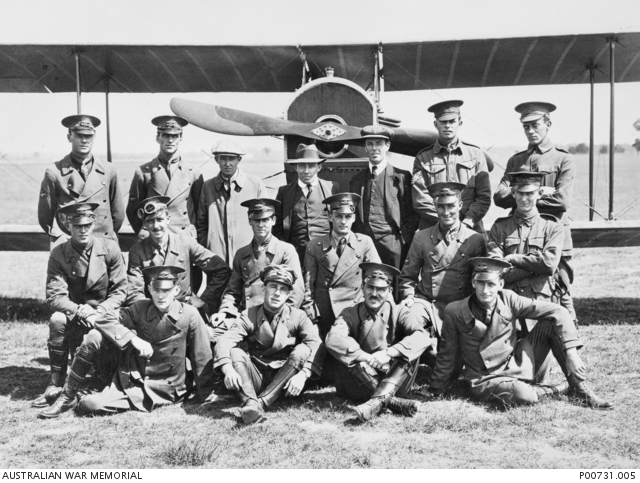
A group photograph of AFC pilots in training - Raynes Royle is standing in the back row, extreme right (Australian War Memorial). |
The news of Philip’s death soon reached Newbury:
Newbury Weekly News, 14 November 1918 - Local War Notes
Mr and Mrs E Buckingham, of the Limes, received on Tuesday morning and official notification from the Air Ministry of the death on the 8th Nov, of their eldest son Lieut P E Buckingham, MC, RAF, aged 22, He was educated at the Newbury Grammar School and Churchers College, Petersfield, and received his commission early in 1915, after being rejected in 1914, but after an operation was accepted. He trained with the 10th Bedfords and the 12th Royal West Kent Regt, and was the crack shot in both these regts. On going to France in June 1916, he was attached to the 37th T M Baty, and was awarded the MC on Nov 1st, 1917. Official record: “By his gallant example he kept up the morale of his men and showed great energy and resource in keeping his guns in action in spite of a heavy barrage and many difficulties connected with the guns themselves.” In June 1918 he came home and was transferred to the RAF and trained as an observer at Reading, Uxbridge, and Winchester, and only returned to France six weeks ago. His CO writes: He was at the same billet as I was so that I had got to know him well and we shall all miss him very much. He has done very well in the Squadron and he and his pilot were a most able and gallant pair.” Thus a gallant young officer’s career has been cut short at the moment that hostilities were ceasing.
Philip’s body was buried in grave I.D.8 at Kezelberg Military Cemetery in Belgium. Kezelburg had been behind enemy lines for most of the war but was captured by the 15th Irish Rifles on 15 October 1918 – the Military Cemetery was created at that time and all its 147 burials date from a very short period from 25 October to 12 November 1918.
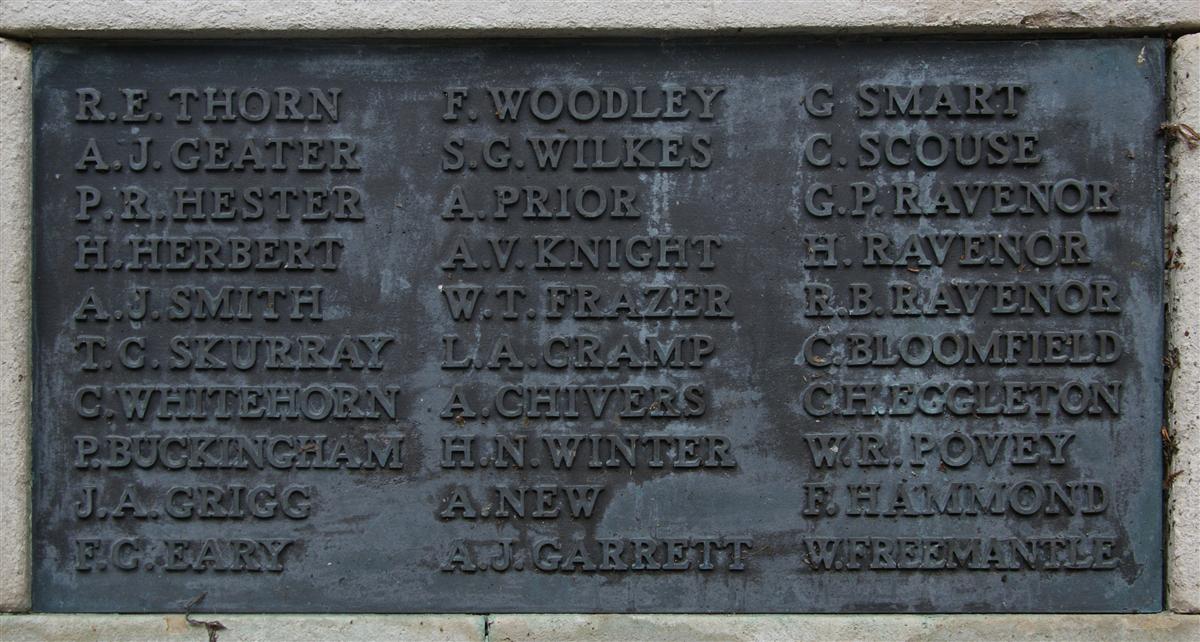
Philip's name on Newbury War Memorial (lower left) |
A further obituary was printed in Flight magazine:
Flight, 21 November 1918 - Personals : Casualties.
Lieut Philip Edwrd Buckingham, MC, RAF, who was reported killed on November 8th, was the eldest son of Mr and Mrs E Buckingham of “The Limes,” Newbury, and was born on November 14th, 1896. He was educated at Newbury Grammar School and Churchers College, Petersfield. He played in the first XI for “Churchers” both in cricket and football, and represented his college at Hampshire County sports. He was also a lover of horses and a keen motor cyclist. After an operation, he received his commission in May, 1915, and trained with the 10th Bedfordshire Regiment and the 12th Royal West Kent Regiment. On going to France in June, 1916, he was attached to the 37th T M Battery, and was awarded the MC on November 1st, 1917. Last June he returned to England to join the RAF, and obtained his “wing” in October, joining the 7th Squadron early in that month.
Acknowledgements
Thanks are due to two contributors to the Great War Forum: “Dolphin” for his information on Philip Buckingham and his pilot and “Cnock” for the photograph of 2/Lt Raynes.

